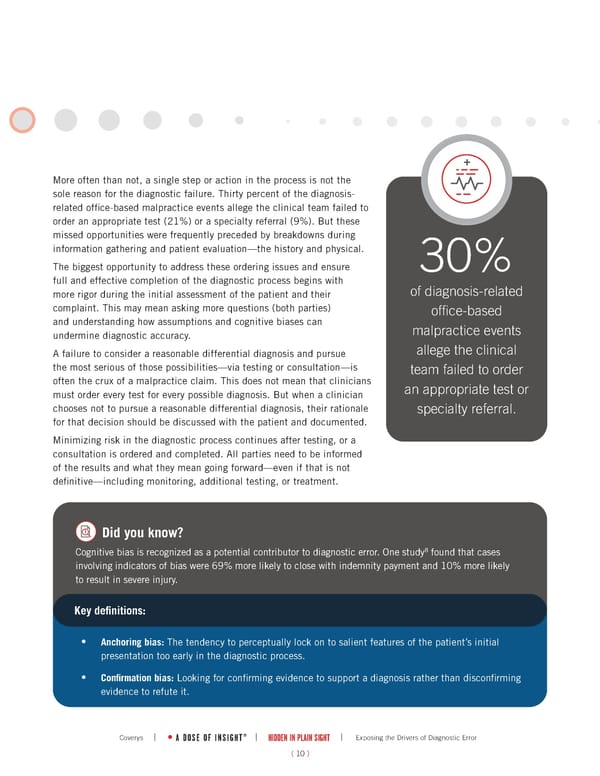More often than not, a single step or action in the process is not the sole reason for the diagnostic failure. Thirty percent of the diagnosis- related office-based malpractice events allege the clinical team failed to order an appropriate test (21%) or a specialty referral (9%). But these missed opportunities were frequently preceded by breakdowns during information gathering and patient evaluation—the history and physical. The biggest opportunity to address these ordering issues and ensure full and effective completion of the diagnostic process begins with more rigor during the initial assessment of the patient and their complaint. This may mean asking more questions (both parties) and understanding how assumptions and cognitive biases can undermine diagnostic accuracy. A failure to consider a reasonable differential diagnosis and pursue the most serious of those possibilities—via testing or consultation—is often the crux of a malpractice claim. This does not mean that clinicians must order every test for every possible diagnosis. But when a clinician chooses not to pursue a reasonable differential diagnosis, their rationale for that decision should be discussed with the patient and documented. Minimizing risk in the diagnostic process continues after testing, or a consultation is ordered and completed. All parties need to be informed of the results and what they mean going forward—even if that is not definitive—including monitoring, additional testing, or treatment. ( 10 ) | HIDDEN IN PLAIN SIGHT | Exposing the Drivers of Diagnostic Error A DOSE OF INSIGHT ® Coverys | 30% of diagnosis-related office-based malpractice events allege the clinical team failed to order an appropriate test or specialty referral. Key definitions: • Anchoring bias: The tendency to perceptually lock on to salient features of the patient’s initial presentation too early in the diagnostic process. • Confirmation bias: Looking for confirming evidence to support a diagnosis rather than disconfirming evidence to refute it. Did you know? Cognitive bias is recognized as a potential contributor to diagnostic error. One study8 found that cases involving indicators of bias were 69% more likely to close with indemnity payment and 10% more likely to result in severe injury.
 Hidden in Plain Sight: Exposing the Drivers of Diagnostic Error - PART II Page 10 Page 12
Hidden in Plain Sight: Exposing the Drivers of Diagnostic Error - PART II Page 10 Page 12